The Railroad Killer claims two more victims
Plus: a young mother killed in her own apartment, a Utah teen goes missing, and more.
1938: Another torso is added to the Cleveland Torso Murderer’s body count
When two burlap bags were seen floating in Cleveland’s Cuyahoga River, they probably looked like trash, or forgotten bags of supplies, or…or…anything but what was actually in them: the nude torso of a woman, cut in half.
Other parts of her body were discovered later—thighs, feet—but her head was never found, and the woman has never been identified.
Instead, she’s become known as Jane Doe III, the tenth known victim of the Cleveland Torso Murderer. Between September 1935 and August 1938, a presumed serial killer was beheading and dismembering poor people who lived in Cleveland’s shantytowns.
Many of the victims were drifters and have still never been named. It’s believed the killer slaughtered at least twelve people, possibly many more.
The famous Prohibition agent Eliot Ness was dispatched to find the Torso Murderer, but could not lock anyone up for the crimes. Ness was Cleveland’s Public Safety Director at the time, and he did manage to arrest and interrogate one of the main suspects, but nothing came of it. He later performed an extreme move: he had all the shantytowns burned down, saying it was a way to get potential victims out of the area.
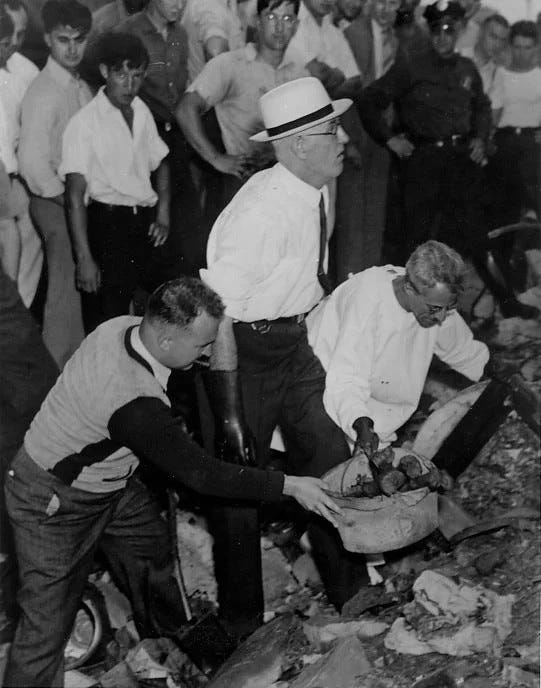
The burning seemed to be a success; once the shantytowns were gone, the Cleveland Torso Murderer seemed to have stopped. Unless he moved to LA and became the Black Dahlia’s killer, as some suspect—but that’s only a rumor.
Explore More
Short read: Torso Murders: Identifying the Victims, Cleveland Police Museum
Long read: In the Wake of the Butcher: Cleveland Torso Murders, James Jessen Badal
Listen: The Mad Butcher of Kingsbury Run: Cleveland’s Torso Murders, Dark Histories Podcast
Watch: The Ghastly Cleveland Torso Murders, BuzzFeed Unsolved Network
1988: Diane Dahn killed in her own apartment
Diane Lynn Dahn died with a strand of hair clutched in her hand.
She was murdered in her San Diego apartment, and when her coworker showed up to see why she hadn’t come to work that day, the coworker found her two-year-old son, Mark, wandering around the place.
For 34 years, Mark—and the rest of Dahn’s family—had no idea who had stabbed and bludgeoned Dahn to death. Then, DNA came to solve the case.

Detectives had turned to DNA again and again in Dahn’s murder, but for decades, the technology just wasn’t advanced enough to provide any help. In 2000, they tested DNA from under her fingernails, but didn’t get enough of a profile from it to be usable.
In 2010, they processed the hair and placed the results into CODIS, but didn’t get any results. Finally, in 2020, investigators used that DNA from the hair to track down Dahn’s killer via genealogy, the same way detectives tracked down the Golden State Killer.

The criminal? Her neighbor, Warren Robertson, who—like Dahn—loved racecars and frequently attended races at the nearby El Cajon Speedway. They must have known each other, but Dahn’s family won’t get many more answers about the reason behind her murder. Robertson died in 1999 when his house burned down.
Dahn’s son thankfully doesn’t remember the murder, but says that the loss has affected him deeply nonetheless. “Sometimes you do feel alone all the time,” he told police.
Explore More
Listen: DNA Solves the 34-Year-Old Cold Case of Diane Lynn Dahn, ENMESHED
Watch: The Evil Murder of Diane Lynn Dahn, Criminal Collective
1995: High school student goes missing, classmates lie about what they know
Fifteen-year-old Kiplyn Davis of Spanish Fork, Utah, had argued with her parents, arrived at school early, gone to her morning classes, and showed up at lunchtime—and that was it. Some friends say that she had talked about running away that day.
But the fact that she’d left her purse full of makeup in her locker seemed to indicate otherwise. Those who knew Kiplyn knew that she would never leave her makeup behind.
When she didn’t return home at her usual time, her parents reported her missing. Days, weeks, and months passed, and the likelihood that she didn’t actually run away increased as time went on.
In 1999, her parents put up a gravestone with her name on it.
Behind the scenes, though, the town swarmed with rumors. Everyone knew that two seniors who were in the drama club with Davis were questioned by police, and over the years, those two—David Rucker Leifson and Timmy Brent Olsen—were heard talking about the time they killed a girl.
As the 10th anniversary of Davis’s disappearance drew near, five men—including Leifson and Olsen—were suddenly indicted by police for lying about Davis’ disappearance. The lies were part of a web of coverups, with Leifson and Olsen at the center of it all.
In 2011, Olsen was convicted of manslaughter for his role in Davis’s death, saying that another person—he refuses to say who—hit Davis over the head and killed her, and then they both buried her body. He refuses to tell Davis’ family where she was buried, no matter how much they plead.
He will be released in 2026.
Explore More
Read: The Kiplyn Davis Story, a Decade Later, The Salt Lake Tribune
Listen: MISSING: Kiplyn Davis, Crime Junkie
Watch: The Teen Who Murdered His High School Crush.., Twisted Minds
1997: The Railroad Killer claims two more victims
In the late ‘90s, anyone who lived near railroad tracks in Texas, Kentucky, or Illinois was afraid. Someone was jumping off trains and slaughtering victims near the tracks, and no one had any idea who it was—because the killer was heading back and forth across the Mexican-American border, expertly evading the law.
On May 2, the killer beat pastor Norman Sirnic and his wife Karen to death with a sledgehammer, leaving their battered bodies in their own Texas parsonage before driving the couple’s car away. Their bodies were discovered when worried congregants came to check on them after they didn’t show up for a service.
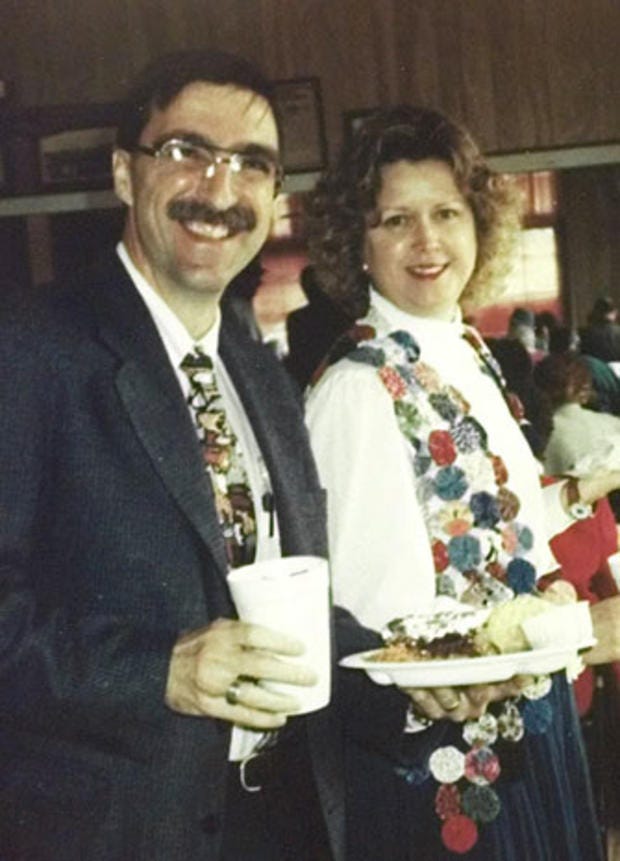
Their killer was a Mexican citizen named Angel Maturino Reséndiz, and not long after killing the Sirnics—and four subsequent victims—he was deported back to Mexico. By then, he was on the FBI’s Most Wanted list, and his own sister saw his face on a poster and turned him in.
A year later, he was sentenced to death. In 2006, he was executed by lethal injection. Before dying, he apologized for allowing “the Devil to rule [his] life.”
Explore More
Read: Angel Maturino Resendiz: The "Railroad Killer", CBS News
Listen: Dead Man Talking, Audioboom (includes interviews with Reséndiz)
Watch: Angel Reséndiz: The Railroad Killer, this is MONSTERS



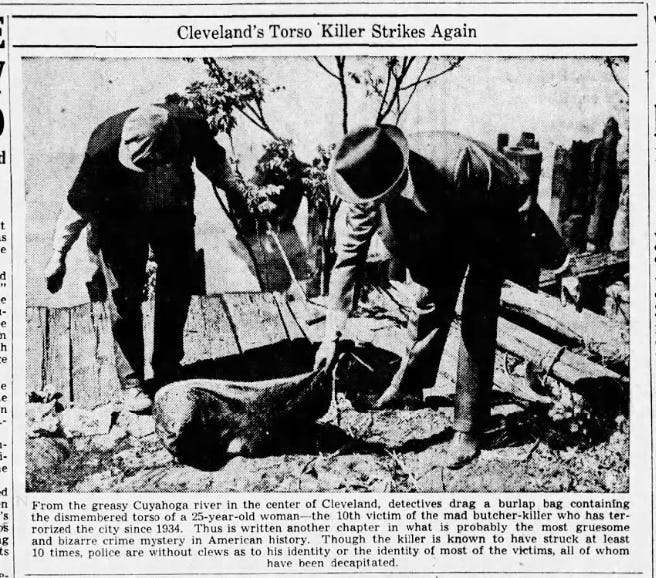

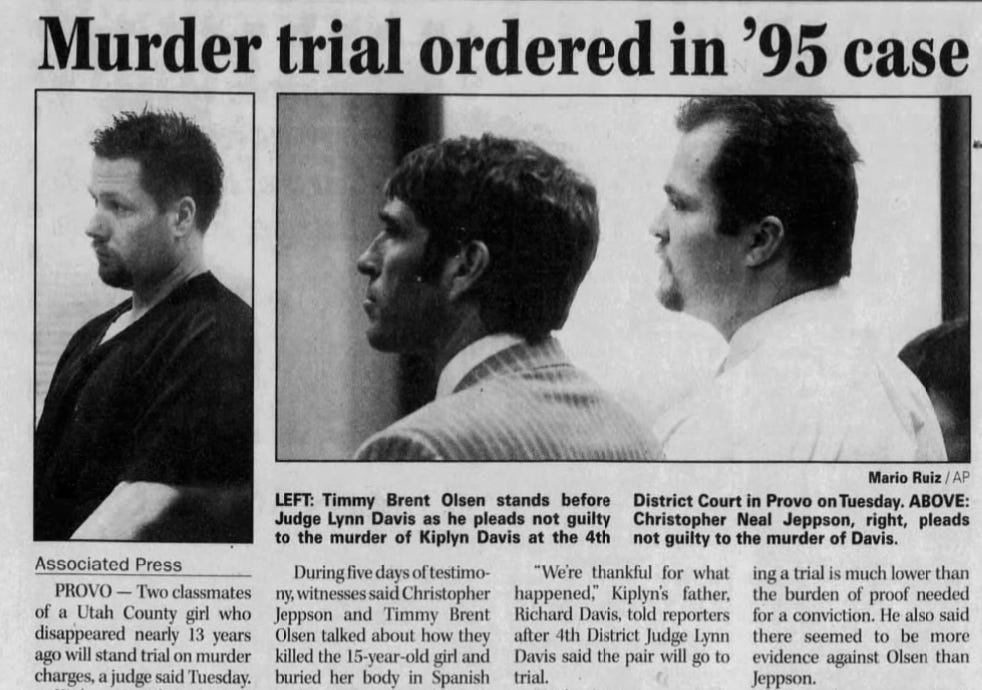
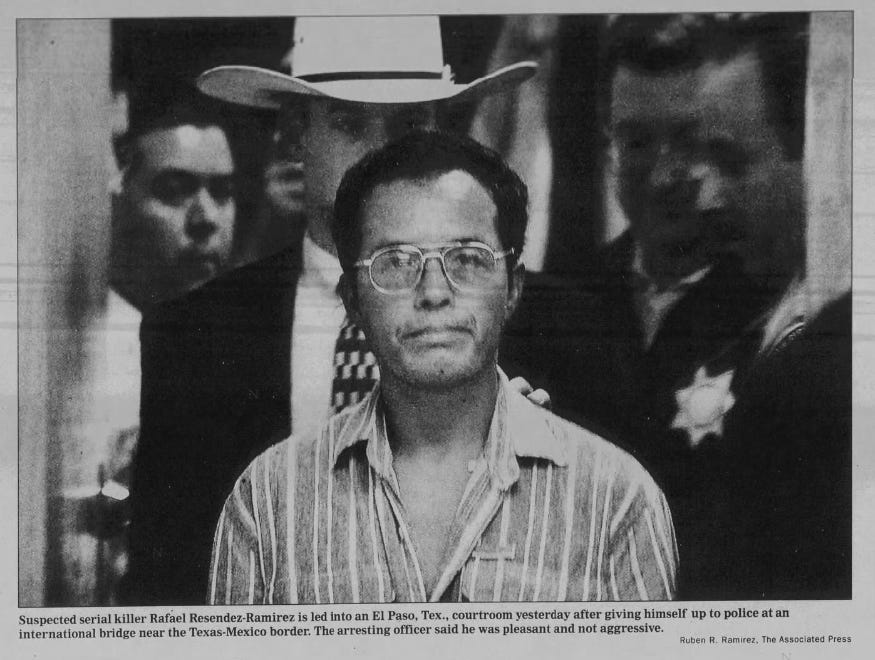
Great read this Thursday! Just a thought: don’t most murderers lie in plain sight?